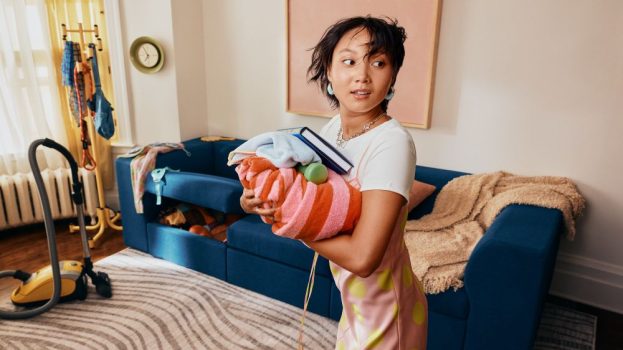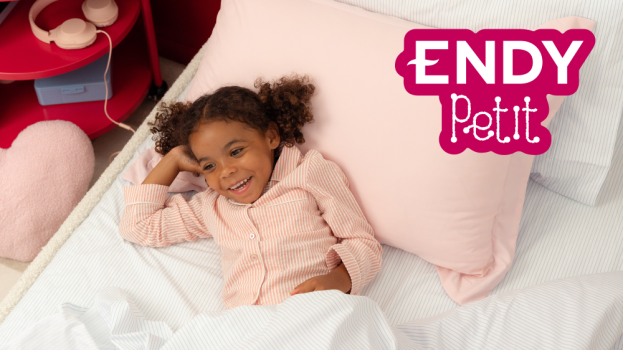Every day this week, we are rolling out the profiles of our 2022 Marketers of the Year. Read the other stories as they are published here.
This story was originally published in the Winter 2023 issue of strategy.
One might think that working for a globally-known and internationally-loved brand would provide the perfect foundation when it came to building a winning marketing strategy. And you’d likely be right. But for Johanna Andren, head of marketing for IKEA Canada, that innate popularity comes with challenges – how do you maintain that momentum, stay top of mind and, perhaps more importantly, how does that longstanding brand love trickle down to new audiences?
“Not everyone is renovating their kitchen this month,” Andren notes, and the shifting winds of the pandemic have drastically changed what and how people are prioritizing. So the challenge hasn’t just been about building campaigns and messaging that ensures IKEA is the brand Canadians think about when that home or office project hits their radar, but also ensuring that a more authentic and resonant message is being delivered.
Three years in, Andren remains steadfast in her belief that marketing’s role should be less tactical and more about brand building. While she has spoken to creating more balance between short- and long-term marketing and comms activities in the past, she says the ideal ratio seems to be about 60/40 in favour of long-term approaches.
For Andren, that means the brand needs to keep leaning into the authentic storytelling that IKEA has always been so good at, but with one key difference. It’s not just brand building through good storytelling. It’s also building the brand from within the company itself. Andren has played a lot of soccer and thinks about marketing and brand building as a team effort. “If we do it together, we win,” she says.
And by “together,” Andren means across all functions within the organization. “Even with a considerable media budget, we can have a much larger effect and be more visible if we implement campaigns in our stores, on our website, and if you have co-workers act as ambassadors.”
Yes, the new brand platform (“Beautiful Possibilities”) that gave birth to “Bring Home to Life” was a marketing-led effort, but Andren says they brought together approximately 40 IKEA team members across PR/comms, home furnishing, retail design, sales, customer service and in-store employees themselves early on in the process to build out the initial concepts.
The goal was a 360-integrated campaign designed to remind, re-inspire and reconnect Canadians with what “home” can look and feel like. “What is a home without love or laughter, late-night talks or early morning sprints for the school bus? A house might be defined by its four walls and a roof. But home is defined by the lives that are lived inside of it,” says Andren of the campaign and the ideas the team helped generate. “Our solutions help people bring the spaces that matter most to them to life.”

IKEA’s newest spot, “Happiness Starts at Home” is the latest installment in the “Bring Home to Life” campaign. It’s the story of how a boy helps a grumpy troll bring his “home” to life.
More specifically, “Bring Home to Life” (which rolled out nationwide with long-form TV spots, online videos, social media, traditional billboards and DOOH, as well as through owned channels including the IKEA Family loyalty program, the website and in stores) revolved around the pandemic and how the idea of home itself has changed for many people, having spent two years essentially locked inside our houses.
More recently, economics have become a factor. Affordability is a significant consideration. Homes stopped being sanctuaries and turned into a source of tension and anxiety for many Canadians during the pandemic. That in and of itself wasn’t revelatory, but the cross-functional team Andren created to fuel the storytelling was.
And while much of this team effort resulted in the ideas and pain points the messaging delivered on, Andren says it is increasingly important that the entire company, from top to bottom, understand the insights and purpose-driven messaging IKEA is putting out into the world.
She calls out the “Our Little World” campaign (OLW), which was only launched across paid media channels, as a prime example. Says Andren, “the key [for this and all campaigns, is] to invest time and really explain the insight and purpose, and involve co-workers before launch. We don’t want our co-workers to see the message first on TV.”
“Our Little World” encouraged people to create a big impact through small eco-friendly acts at home, reinforcing IKEA’s commitment to sustainability and the idea that the brand is more than just furniture and design. The campaign specifically didn’t ask people to buy more. It actually asked people to buy less, showing Canadians they could help make their own little worlds (the home) a more sustainable place.
Planning for OLW kicked off in summer of 2021 and involved a cross-section of IKEA teams – including marketing, home furnishings, sales and PR/comms. Just as importantly, it involved general IKEA staff. Over the course of eight workshops and two discussion sessions over a four-week period, more than 50 employees were able to offer up stories and suggestions for the new platform.
“We set up a cross-functional team for larger campaigns once we’ve created the brief,” explains Andren. “When marketing has decided on a creative umbrella, we share the overall creative idea with internal partners and, in preparation for the launch, we share the overall external communication assets so that they can be adapted to different channels.”
For example, to create conversations about sustainability for the OLW campaign, the IKEA team created environmentally themed buttons that floor staff could wear as “conversation starters,” intended to spark dialogue with customers and co-workers about the sustainable products, materials and solutions that IKEA offers. The same images used on the buttons were repurposed to create backgrounds for Teams calls. IKEA staff were also invited to give tips and tricks for making our world a better place, which were then turned into a public-facing e-booklet.
Thinking both long- and short-term when it comes to marketing tactics and brand building is key, she says. “If you want to be profitable three years from now, you can’t be too tactical,” but if you want to be relevant for new audiences, you have to pay attention and listen to what’s important to them, in the here and now, on the channels they care about.
This is where campaigns like “The Cristiano Bottle” stand out, she says. Sustainability is part of the brand’s long-term positioning, especially here in Canada. And yes, those big-picture, “we’re more than just a retailer” campaigns continue to resonate with IKEA’s incumbent audience here, but it’s “wild card” opportunities like Cristiano Ronaldo choosing “agua” over Coke and, IKEA (along with its agency Rethink) renaming its reusable glass Korken water bottle the Cristiano Bottle on social media, that reinforce how important that 60/40 balance is.
Similarly, from a local perspective, not all brand messaging resonates with audiences across the country. Again, those bigger-picture, long-term brand messages around sustainability and inclusivity have broad appeal, but the challenge is to make sure the team pays attention to issues on the ground at a local level where IKEA may not have been top of mind to date.
Andren calls out a Quebec-specific campaign the brand ran this summer. Moving is not something people like to do, and moving day in Quebec is a unique phenomenon, accompanied by some uniquely Quebecois colourful language. IKEA doubled down on the Quebec market and rooted the campaign humour in local parlance, resulting in OOH, radio and digital creative playing on the phonetic resemblances between IKEA products and phrases overheard on moving day (“TARBAK” vs. “Tabarnak,” or “KALLAX” vs. “câlisse”).
Going forward, Andren says her focus needs to grow. While certain activations – like “The Cristiano Bottle” – were tailor-made for social channels and younger audiences, there’s still work to do with the long-term in mind. IKEA Canada still needs to reach a younger audience, she says, indicating that her team needs to develop the brand’s voice and activities on more social media channels like Snapchat and TikTok.
That said, overall Andren is confident in her strategy. “We need to start with our people, co-workers, team,” Andren insists. “If they [the IKEA employees] can relate to the brand platform and believe in it, they will help us to bring this message out to customers.”
























